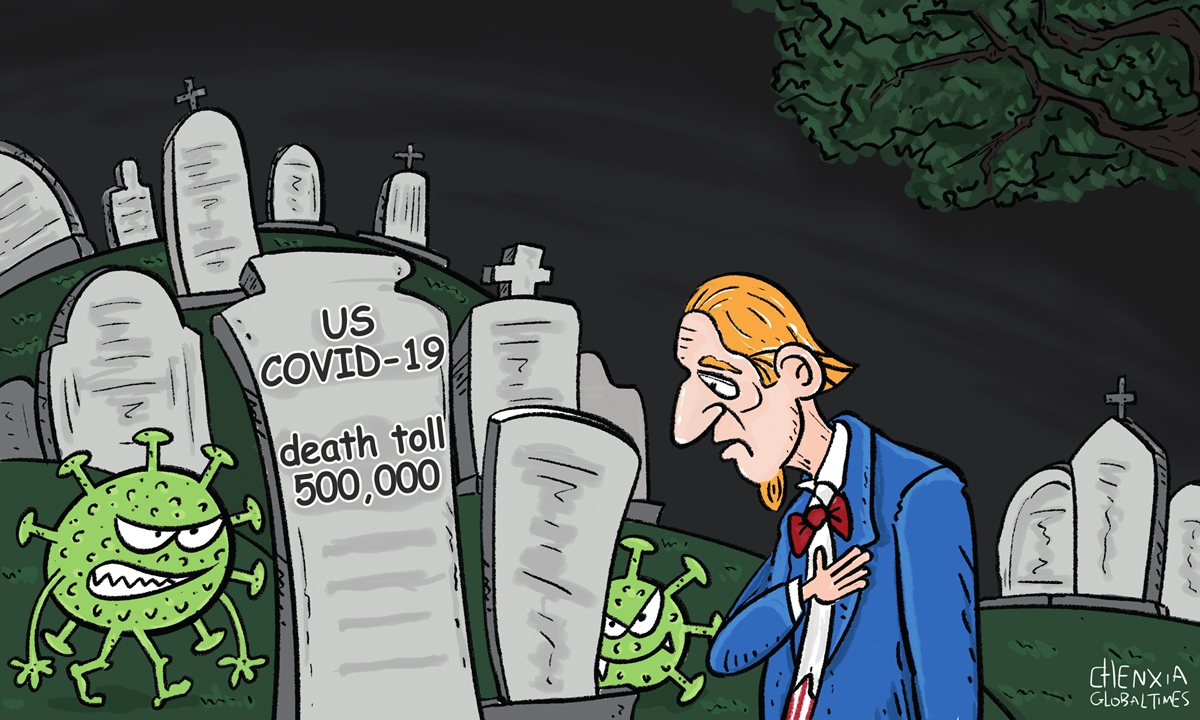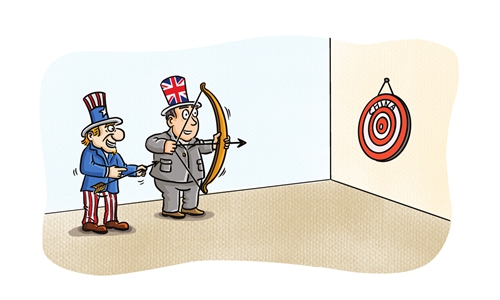US media outlets should stop being morally narcissistic

Illustration: Chen Xia/GT
The New York Times printed nearly a half-million dots running down the length of the front page on Sunday. Each of the nearly 500,000 individual dots represents a life lost in the US to the coronavirus. Such a report can easily arouse sympathy, but the fact is that the media in the US didn't play a useful role to prevent those deaths from happening. The polarization of the two-party system in the US has marked the media supervision there with the profound brand of partisan struggle. There has been no real supervision of public opinion independent of politics in the US. So half a million deaths were staged under the noses of the top Western media outlets.
To put it bluntly, the actual effectiveness of public opinion supervision in the US is in many cases less powerful than the power of public opinion on the Chinese Internet. If there is a mistake in China that damages people's livelihood in a large scale, public opinion in the internet will definitely react, and the government will definitely pay enough attention to it, and adjustment will follow.
I don't mean to say that public opinion supervision in China is fully functional, and it is better than the US. I am well aware that China still has many shortcomings in this regard. But the US opinion-elites should stop being arrogant, as they have serious flaws. In the past, the Chinese did not see those flaws as they looked up at the US, but today we see a lot more.
We have at least seen clearly the how the US media outlets put political stance before the facts and how they are politically selective in their so-called objective reporting. They have largely acted as tool in the partisan struggle within the US, which has weakened their authority. Internationally, they are die-hard fans and loudspeakers of American hegemony. They really have nothing to be morally narcissistic.
The author is editor-in-chief of the Global Times. opinion@globaltimes.com.cn


